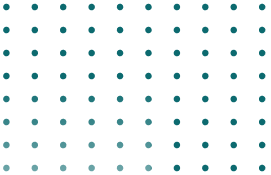
In 2025, commercial real estate investors are facing more pressure than ever to source quality deals faster and more cost-effectively. Competition for assets is rising and the old methods of manual OM reviews and broker-first outreach are no longer sufficient. AI has quietly but decisively entered the picture, and it’s not going away.
Over the past 18 months, adoption of artificial intelligence in CRE deal workflows has accelerated. From parsing offering memoranda to identifying off-market owners, AI is helping investment teams make faster, smarter, and more data-driven decisions.
In this post, we’ll break down five major AI trends shaping commercial real estate deal sourcing in the second half of 2025.
1. NLP-Powered Offering Memorandum Extraction
Reviewing offering memoranda has traditionally been a manual grind. Teams pore over PDFs, highlighting rent rolls, cap rates, and footnotes, only to transpose that data into a spreadsheet later. In 2025, natural language processing (NLP) has finally reached the point where large language models (LLMs) can extract, normalize, and summarize deal information at scale.
By parsing tables and paragraphs, these models can identify lease expirations, expense structures, and more even when the formatting is inconsistent. Investment teams can now screen 3–5× more deals per week with less analyst bandwidth.
2. AI-Driven Lead Scoring for Off-Market Opportunities
Off-market deal sourcing is where AI shows the most promise and it’s where the competition is heating up.
Machine learning models now analyze tax records, ownership tenure, refinance dates, zoning changes, distress signals, divorces, building condition, and even weather-related damage to predict which owners are likely to sell. This scoring lets CRE firms prioritize outreach and focus their time on higher-probability leads. In a 2025 Deloitte PropTech Trends survey, 62% of CRE firms cited “predictive AI models for sourcing” as a top emerging tech investment.
3. Geospatial + Demographic AI for Submarket Scoring
The combination of geospatial intelligence and demographic trend data is being supercharged by AI.
Modern platforms pull in foot traffic, commute patterns, infrastructure developments, and even upcoming zoning changes then run clustering and scoring models to surface “emerging” pockets of value.
Example: a logistics-focused firm may train a model to highlight industrial-zoned parcels within 3 miles of new intermodal rail stations and low vacancy rates. Rather than react to comps, firms are getting ahead of the trend with AI-driven site discovery.
4. Deal Signal Extraction from CRM + Email Activity
One of the most underrated AI trends in CRE sourcing is happening inside inboxes and CRMs.
LLMs now analyze broker interactions, response times, sentiment, attachments, and frequency to identify “deal signals” e.g., which brokers send high-quality deals, which contacts are ghosting, or which past leads are reengaging.
These insights feed dashboards that help teams focus their relationship-building efforts. In some cases, AI even suggests next steps e.g. “follow up with CBRE Boston, they’ve sent 3 off-market OMs in 60 days.”
By analyzing communication metadata, AI augments intuition with patterns and flags human teams might miss.
5. Public + Private Data Fusion for Smarter Targeting
Finally, the most powerful trend: blending proprietary firm data with third-party sources.
CRE firms are sitting on goldmines of past deal data: what was bid, won, lost, and why. Now, that data can be fed into AI models alongside CoStar, Placer.ai, Google Trends, and census data to predict what types of deals perform best across different cycles.
Think of it as “modeling your own investment DNA” and scaling it.
Challenges & Ethical Considerations
Of course, AI isn’t magic and there are real risks if poorly implemented:
- Garbage in, garbage out: Poor or biased training data leads to inaccurate scoring.
- Compliance: Data usage must comply with privacy laws and ethical standards.
- Overreliance: Analysts should validate AI outputs, not blindly trust them.
CRE firms need to pair automation with expertise. The best results come from human-AI collaboration, not replacement.
How to Get Started
Here are three actionable steps for firms looking to incorporate AI into their sourcing stack:
- Audit your current deal flow: Where is time being wasted (OM review, outreach, submarket analysis)?
- Inventory your internal data: What past deals, contacts, and communications could feed a sourcing model?
- Pilot one AI tool: Choose a use case (e.g., OM extraction or off-market lead scoring) and test ROI in one market.
Conclusion: AI Won’t Replace You. But It Might Outpace You.
AI is no longer experimental – it’s operational.
CRE teams that embrace AI-driven sourcing workflows in 2025 will identify opportunities earlier, work smarter, and win more deals. Those that don’t risk falling behind faster than ever.
As the second half of 2025 unfolds, it’s clear that real estate is no longer immune to the automation wave.


